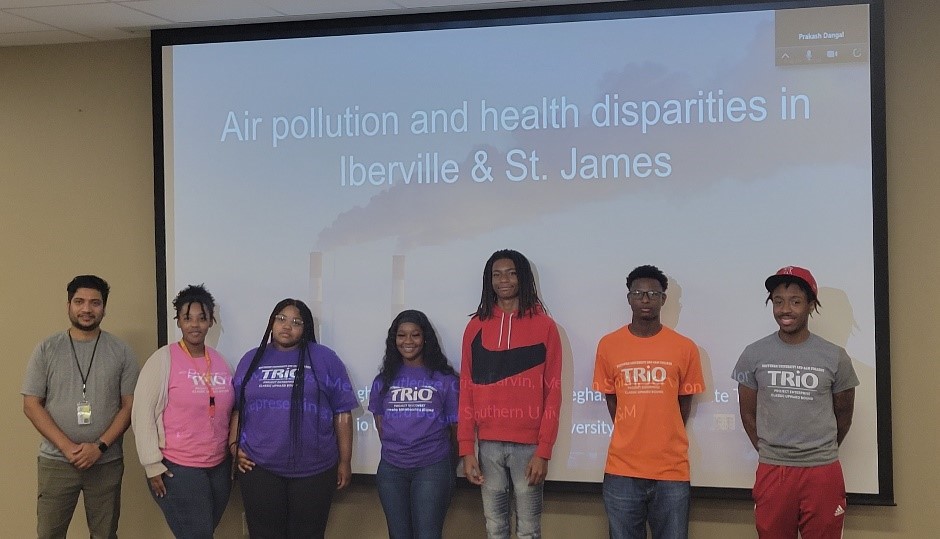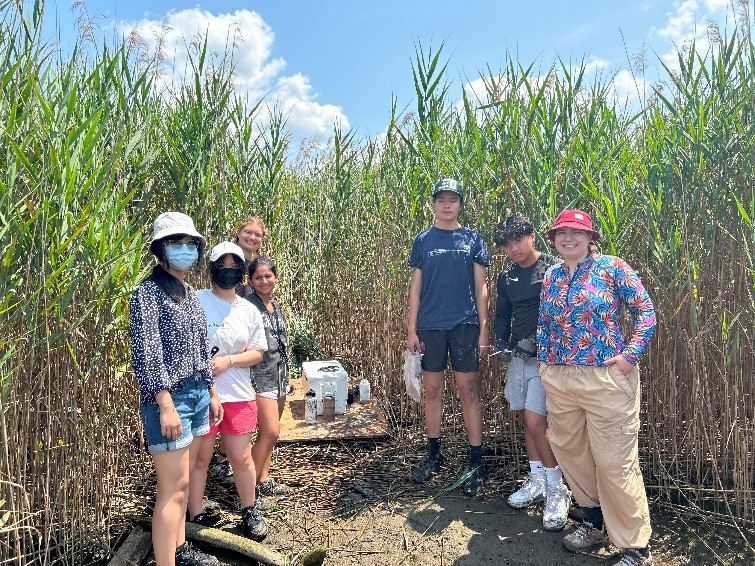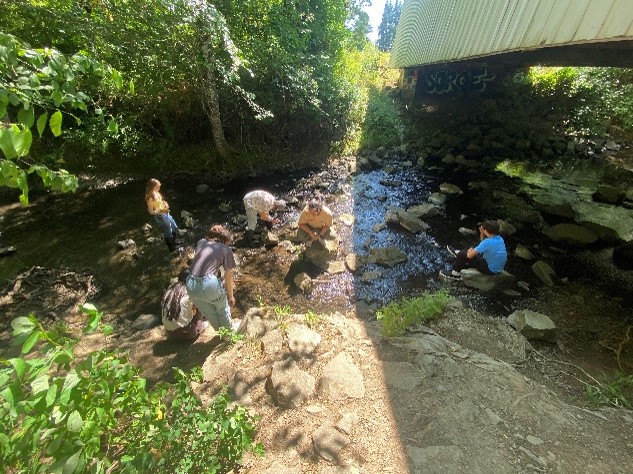Superfund Research Program
November 2023
By Cassidy Rice
Two core goals of multi-project NIEHS Superfund Research Program (SRP) centers are community engagement and research training. Summer programs provide opportunities for center researchers and trainees to serve as mentors and share their work with the community and for students of all ages, from elementary school to college, to learn more about environmental health and research.
Conducting Air Pollution Research
The Louisiana State University (LSU) SRP Center hosted students for the Shining Light on Pollution Program, a partnership between the center and Southern University to increase environmental health literacy. Twenty high school students participated this summer, learning how to evaluate and respond to environmental health risks in their environment.
The program included time for students to learn more about air pollution, presentations from guest speakers about various career paths in environmental health, and hands-on research activities. Some of these included using LEGO blocks to build models of pollutants and collecting particulate matter and weather data with real-time sensors that sent data to a smartphone app. Students also participated in group presentations to conclude the program.
 A group of students present their project on “Air Pollution and Health Disparities in Iberville & St. James.” (Photo courtesy of Jen Irving)
A group of students present their project on “Air Pollution and Health Disparities in Iberville & St. James.” (Photo courtesy of Jen Irving) “A core goal is for participants to learn more about potential careers in environmental health science and practice some of the foundational skills needed for those careers, such as finding information, analyzing data, and communicating results,” said Jen Irving, an LSU SRP Center team member. “Learning about air pollution is especially important to students in North Baton Rouge, Louisiana, since this area of the city has a high concentration of industrial activity as well as two Superfund sites,” she mentioned.
The program also provided an opportunity for LSU SRP trainees to build their mentoring skills and for center researchers to share their work with high school participants. Researchers provided lectures and led a tour and demonstration in one of their facilities.
Gaining Experience in Field Science
The Columbia University SRP Center hosted 48 students at the Secondary School Field Research Program of Lamont-Doherty Earth Observatory. This annual program provides experience in field research and training in presenting and publishing data to youth from primarily underrepresented areas of New York City. One unique aspect of this program is that it welcomes college students and students who have participated previously.
 Secondary School Field Research Program participants pose with field equipment during an excursion in Piermont Marsh, a wetland 30 miles north of New York City. (Photo courtesy of Benjamin Bostick)
Secondary School Field Research Program participants pose with field equipment during an excursion in Piermont Marsh, a wetland 30 miles north of New York City. (Photo courtesy of Benjamin Bostick) “Participants can and often do return for many years, allowing for the projects to be quite developed and advanced,” said Ben Bostick, Ph.D., co-lead of the center’s Community Engagement Core.
Students work on a variety of programs, including creating a census of native and invasive flora in green spaces throughout New York City, studying eutrophication in a local park, and participating in sediment sample collection and water analyses.
They also studied the origination of the tap water that they drink in New York City.
“Students used isotopes to determine where water in the marsh, and in the [New York City] tap water system, is derived. They found that the city water took months to get from the source reservoirs to the tap,” Bostick mentioned.
Toxicology Camp
The Oregon State University (OSU) SRP Center hosted 18 students this summer in collaboration with Project Youth+ for a three-day toxicology camp. Project Youth+ focuses on providing low-income, first-generation, under-represented youth with the resources to excel in school, careers, and life.
“The goal was to introduce high schoolers to concepts in toxicology such as environmental monitoring, dose response, and structure function relationships with hands-on activities in the field and the lab,” said Kim Brown, a program manager for OSU’s Community Engagement Core. “We wanted to be as fun and informative as possible.”
 Students conduct a stream quality assessment and measure nitrogen in Oak Creek, Oregon. (Photo courtesy of Kim Brown)
Students conduct a stream quality assessment and measure nitrogen in Oak Creek, Oregon. (Photo courtesy of Kim Brown) Participants conducted their own experiments and analyzed their data. Projects included assessing stream quality, estimating nitrate and nitrite concentrations, and exploring molecular science using zebrafish.
“Scientists need interdisciplinary training and experience in data analysis, leadership roles, and working in teams,” Brown added. “They need to understand cultural competencies, to engage with diverse communities, and to communicate research outcomes to stakeholders, regulators, and the general public.”
A key goal of the program is to instill those values of interdisciplinary science in camp participants who will become the next generation of environmental health researchers.


